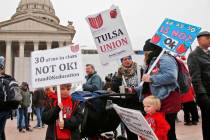The real Michelin men turned faltering business into tire empire
Follow the bouncing ball.
Watch as it transforms from an innocent woman's desire to entertain her children in a quiet French village with something called rubber, into something called a worldwide revolution.
Watch as it transforms one brother from a brilliant engineer into a marketing genius, and the other from an artist into an inventor.
And watch as it revolutionizes a family, a country and a way of life as it becomes a symbol of perpetual motion.
Follow the bouncing ball and you'll also follow the wheels of motion just the way Edouard and Andre Michelin did, making their family name more than just a well-known name in the streets of Clermont, France, by making better wheels of motion.
The brothers had no intention of becoming pioneers in the tire-making business. The bouncing ball got things rolling.
Aristide Barbier, the maternal grandfather of the Michelin brothers, had already joined his cousin Nicolas Daubree and discovered the advantages of rubber when they formed a small manufacturing business in Clermont in 1832.
Daubree's wife was the niece of the eminent scientist Charles Macintosh, who had discovered that rubber was soluble in benzene. She had created balls of rubber, which she used to play with her children. Her husband had discovered the industrial possibilities of vulcanized rubber (hardened by treating with sulphur and heat), using it in his factory to make seals, belts, valves and pipes. But that was only where things got rolling.
After Barbier and Daubree died, the family business went into a serious period of decline. And by 1886 when Andre and Edouard Michelin took over the company, it was near collapse.
Andre knew he had to save the business even if he knew very little about rubber. He was an engineer, an architect and a successful businessman who had created his own metal framework company in Paris. Edouard was even more in the dark. Paints, brushes and canvas he could handle. But rubber? He had just finished his fine-arts studies and was beginning a career as a painter when Andre asked him to help steady the family enterprise.
"My duty is now to go to Clermont to save the family firm from ruin," he told noted artist William Bouguereau upon leaving Paris.
Neither could forecast what was to come.
One spring afternoon three years later, an ox-drawn cart came into the Michelin factory yard carrying a bicycle with a punctured tire. It was unique as it had been fitted with a then recently patented rubber tube inflated with air and protected by fabric, a creation of Scottish businessman John Boyd Dunlop. The tire was glued to the lip of the wheel and, to be removed, required a complex process and many tools.
Edouard Michelin was intrigued by the creation.
He took the bike for a spin around the factory and was amazed with the comfort of the ride, its speed and handling. He felt the future by the seat of his pants -- if only the tire could be easier to repair. Edouard's brainstorm altered the way the world rides today.
After spending more than a year working on an idea, the Michelin brothers unveiled an easily detachable Michelin tire at the Paris-Brest-Paris bicycle race Aug. 14, 1891. Famed racing cyclist Charles Thery rode the new air-filled Michelin tire to victory, even after suffering a puncture, by replacing it in the French countryside.
Marketing geniuses that they were, the brothers were already advertising the victory before Thery crossed the line. The invention revolutionized bicycle transportation. With overwhelming public approval, a year later, some 1,000 cyclists were using Michelin tires. Soon, a burgeoning auto industry would follow, but only with a little help from the brothers again.
Four years later, the Michelin boys created a vehicle called L'Eclair to help demonstrate the feasibility of using changeable tires on automobiles. In an heroic performance that lasted 100 hours, the L'Eclair did exactly that, overcoming a series of breakdowns and one flash fire to complete the 745-mile Paris-Bordeaux-Paris race, one of only nine entries to cross the finish line. The car and the pneumatic tire became inseparable.
Immediately, the Michelin brothers, working day and night out of their Clermont factory, achieved astonishing growth by serving the young automotive industry with the first air-filled, changeable tire.
It helped the Model A become more than just a novelty. It helped the Michelin brothers turn a small, faltering rubber shop into a world player in an emerging market.
Andre was the marketing brains, helping create Bibendum -- the Michelin Man -- after a visit to the 1894 International Fair in Lyon. Edouard was the head of research and oversaw the production process. Together, they built an empire.
Soon, double bus tires were being produced, factories were opened in London and America, roads became marked better, planes were fitted with better tires and a car's fifth wheel, or spare tire, was even produced. Over the next 30 years, they revolutionized auto travel, creating tread patterns, low-pressure balloon tires, steel-cord tires and anything that would make life easier. In 1900, the first Michelin Guide was published: a red-cover booklet offered for free to drivers.
By 1931, 42 years after helping lead a family company out of ruin, Andre Michelin died and left an empire behind. His brother followed nine years later. Together, they had transformed a small factory into an international group. The company had grown to employ more than 25,000 people ... from just two.
The creative painter had become an industrialist. The engineer was known as a public-relations whiz.
And a new century later, Michelin is just as big, and the context of the Michelin brothers' respective destinies is just as astonishing.
Jason Stein is a feature writer with Wheelbase Communications. He can be reached on the Web at www.wheelbase.ws/mailbag.html. Wheelbase Communications supplies automotive news and features to newspapers across North America.









